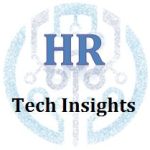
What interests me is how this sort of technology fits into a company’s learning and development strategy. There is no reason an individual department couldn’t adopt this learning tool without consulting HR. There is no need to integrate with the LMS; no need to worry about budgets since these tools are inexpensive; no need to train employees how to use the tool or to monitor it’s use; there’s not even any need to involve IT in implementing this cloud-based learning technology.
One can imagine a few of reasons why the learning and development department might want to be involved, such as assessing the quality of any learning tools the company is using. However, I can also imagine a department manager feeling this was just a way for HR to slow things down rather than as a way to add value.
Of course, young workers may be bewildered by this discussion; they may feel they can already find all the advice they need online for free without a special paid service being offered by their department leader or the HR department. One would hope that paid curated content would be more effective than employees randomly searching on the web, but it’s not guaranteed.
Our ways of delivering learning are changing, and the most dramatic part of it is that the L&D department may not need to deliver learning at all.
What’s interesting
The adoption of some HR technology may not need any involvement from HR. Employees may use their own apps for getting advice, meditating, making connections, communicating, doing psychological profiles and so on without any help from HR. It’s unclear whether HR should celebrate this trend or seek to control it.
What’s really important
It’s always worth remembering that a service like Emoquo, as it exists today, is just a hint of what’s to come. Services providing online learning will be more effective if they know the employee’s psychological profile (as Emergenetics does); they’ll be more effective if they are based on data from a manager’s behaviour (as Rideau Recognition’s Vistance is) — and they’ll be most effective when all this data is brought together (which is yet to come).
